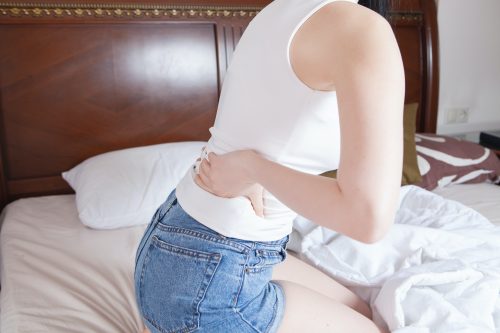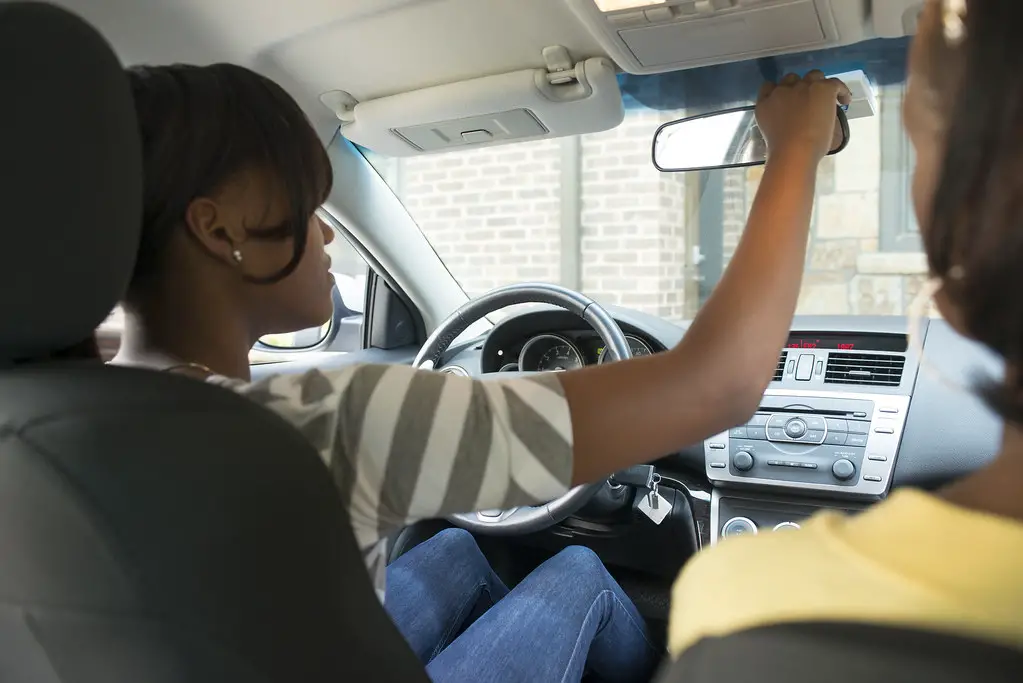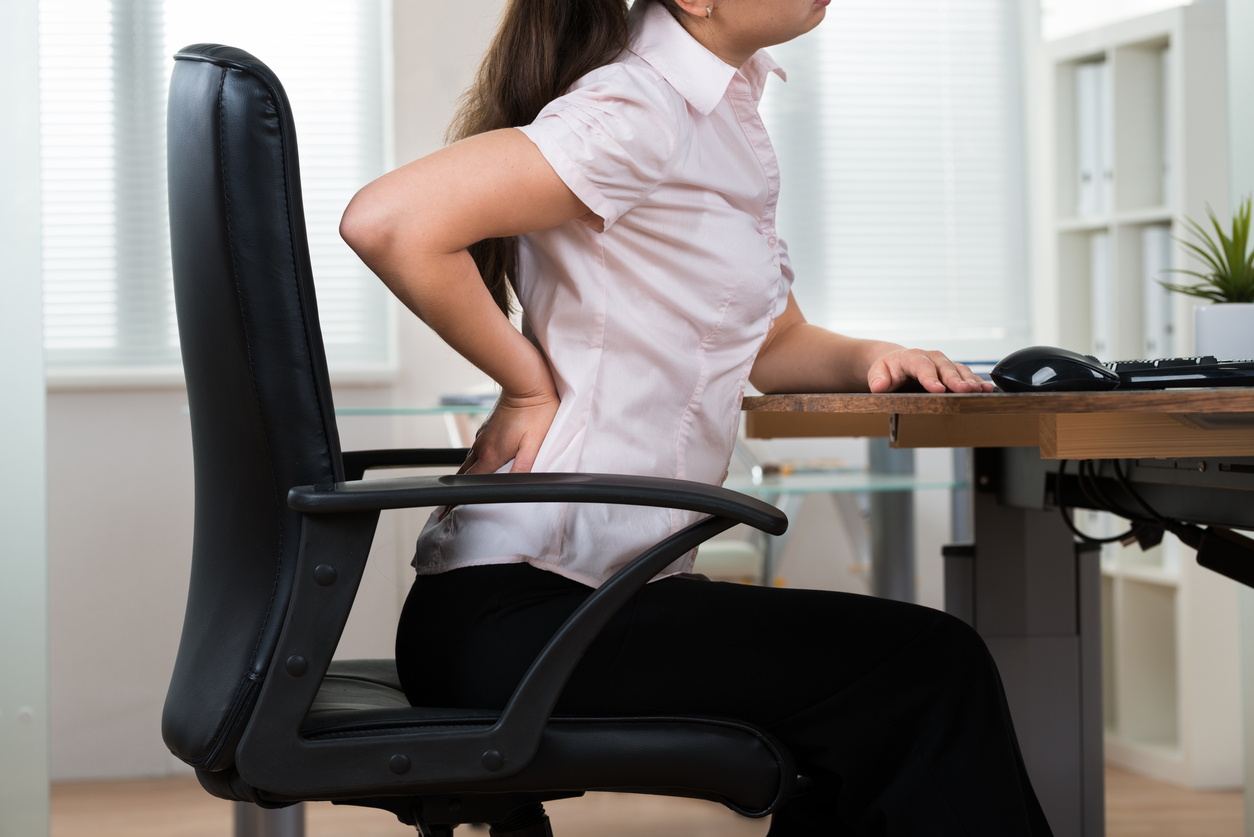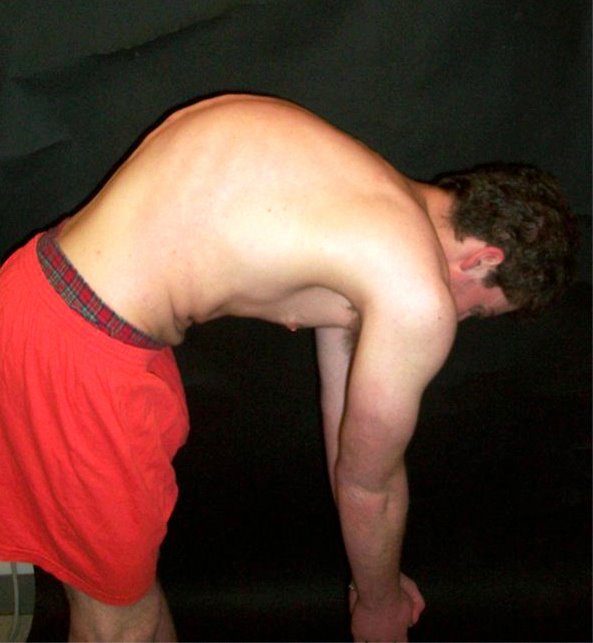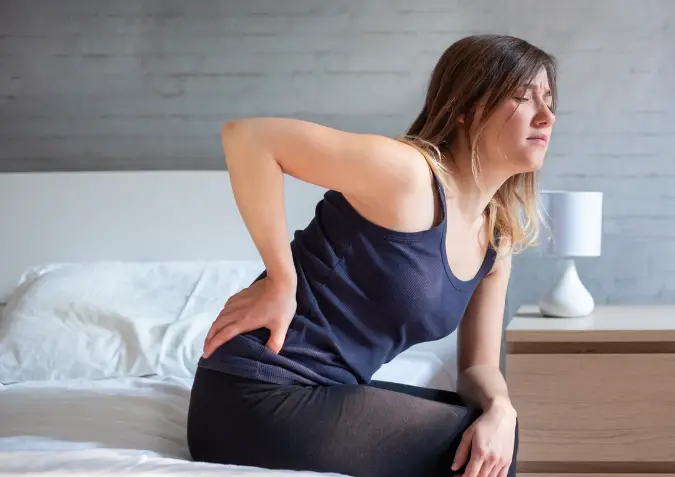Le back pain is one of the most common health problems. This affection sometimes arises at the time of straightening up after a prolonged sitting position. Why the back hurts when getting up from a chair ? What to do in this case ? Find the answers in this article.
Back pain: what is it?
Definition and causes of back pain
Le back pain corresponds to a pain felt at the spine. It is sometimes associated with a blocage et tingling. It persists for a few days to a few months (sometimes more!).
It can be categorized in relation to the painful part.
- neck pain: the pain is localized at the level of the cervical spines, the upper part of the back.
- back pain: the pain is at the level of vertebrae ridges, more precisely at the middle back ou between the shoulder blades.
- Low back pain : the pain affects the lumbar part, it is the lowest part of the spine.
Back pain also refers to the pain sciatica and herniated discs.
The causes of back pain
THEorigin of back pain differs from person to person. It also varies according to typology. For example, the neck pain is often the result of a posture unsuitable, but also stress. The lumbago, which frequently occurs after a Wrong move, a sudden effort or a prolonged posture. The back pain may be the consequence of a kick.
Among the most common causes of back pain are:
- pathological origins, even tumours: osteoarthritis, scoliosis, cancer (rare) ;
- the traumatic originsa kick, a sudden movement, an accident;
- mechanical origins: false movement, poor posture, prolonged posture (sitting), lack of activity, repetitive movement;
- psychological origins: stress, anxiety.
A spinal deformity or an degeneration elements of the spine can also promote the occurrence of back pain.
Why does my back hurt when I get up from a chair?
Poor posture and prolonged static posture
A posture excessive and prolonged sitting requires strong work of the muscles or joints. It thus causes tension throughout the back from the cervical, through the middle of the back to the lumbar. The pain can be felt even while sitting and it gets worse when you get up.
Stay in sitting for several hours a day without doing any movement to relax the muscles is harmful for our body. In a seated position, the curvature of the spine is unnatural, it tends to bend: head forward, shoulders raised, pelvis in retroversion and arched back. The vertebral column thus supports a permanent overload and adapts to this position. This makes it difficult and painful to achieve a standing position. Other than that, a prolonged position blocks tissue oxygenation. This tires the muscles and increases the pain.
Conditions aggravated by sitting
Certain back pain such as herniated disc, sciatic pain, cruralgia and osteoarthritis tend to worsen with sitting. These conditions may be asymptomatic, but the pain potentially increases with prolonged sitting.
La change in the curvature of the spine influence the intervertebral discs. It increases the pressure on them. Discs are compressed forward and stretched backward. The static sitting position causes a deformation disc in some cases. This sometimes creates disc fragility and promotes pain.
As the disc is crushed, the sitting position that compresses the piriformis muscle tends to put excessive pressure on the sciatic nerve. This compression is the cause responsible for the sciatic pain associated with a lower back pain (qualified as lumbosciatica).
Prolonged sitting also compresses the abdomen. It is one of the routes of the crural nerve. This can lead to compression of the crural nerve, which causes pain radiating from the front of the thigh down the leg. It's here cruralgia.
The sitting position increases tension in bones and joints. She wakes up hip pain. Sometimes the pain is felt when changing from a sitting to a standing position.
What can you do to prevent and relieve back pain caused by sitting?
It is always essential to consult a health professional to better clarify the diagnosis and have an appropriate treatment.
Treat the source of back pain
First of all recognize the source of back pain by listening to his body and carrying out the necessary examinations.
The anti-inflammatory can be effective in alleviating pain. Furthermore, recourse to alternative solutions such as physiotherapy, osteopathy and natural products also seems very beneficial.
Avoid prolonged static postures
Even if your job requires you to stay in a chair, it is important to se lever or move regularly for exercise the back muscles. Doing a little mobility and stretching exercise is a good idea.
In a seated position, try as much as possible to reduce tension in muscles, joints and discs. The best way to sit is stand up straight, relax the shoulders, put both feet on the ground without crossing the legs and avoid a posture in rotation or in twisting. Remember to move as much as possible and change positions regularly.
Optimize the workspace
It may be relevant to adjust your chair anduse a lumbar support. The height of the chair should be consistent with that of the work table. These should be close. Also try to put your screen at eye level so that your spinal alignment is maintained.
The use of a ergonomic office furniture seems to have effects on limiting back pain associated with sitting. These are, for example, the ergonomic seat, the wrist rest, the ergonomic keyboard, etc.
Prevent back pain related to sitting by physical exercises
Muscles, joints and ligaments need frequent activity. In the case of pain related to a sitting position, a physical exercise adapted aims to improve body posture. In general, it is composed of:
- un stretching exercise to help soften the spine;
- un strengthening exercise to strengthen the back muscles and protect the joints;
- un mobility exercise to reduce the risk of inflammation.
The endurance exercises cardiovascular are also highly recommended. These include swimming, cycling and walking.
References
https://www.posturite.fr/news/douleur-position-assise-prolong%C3%A9e-conseils-et-solutions-n40

